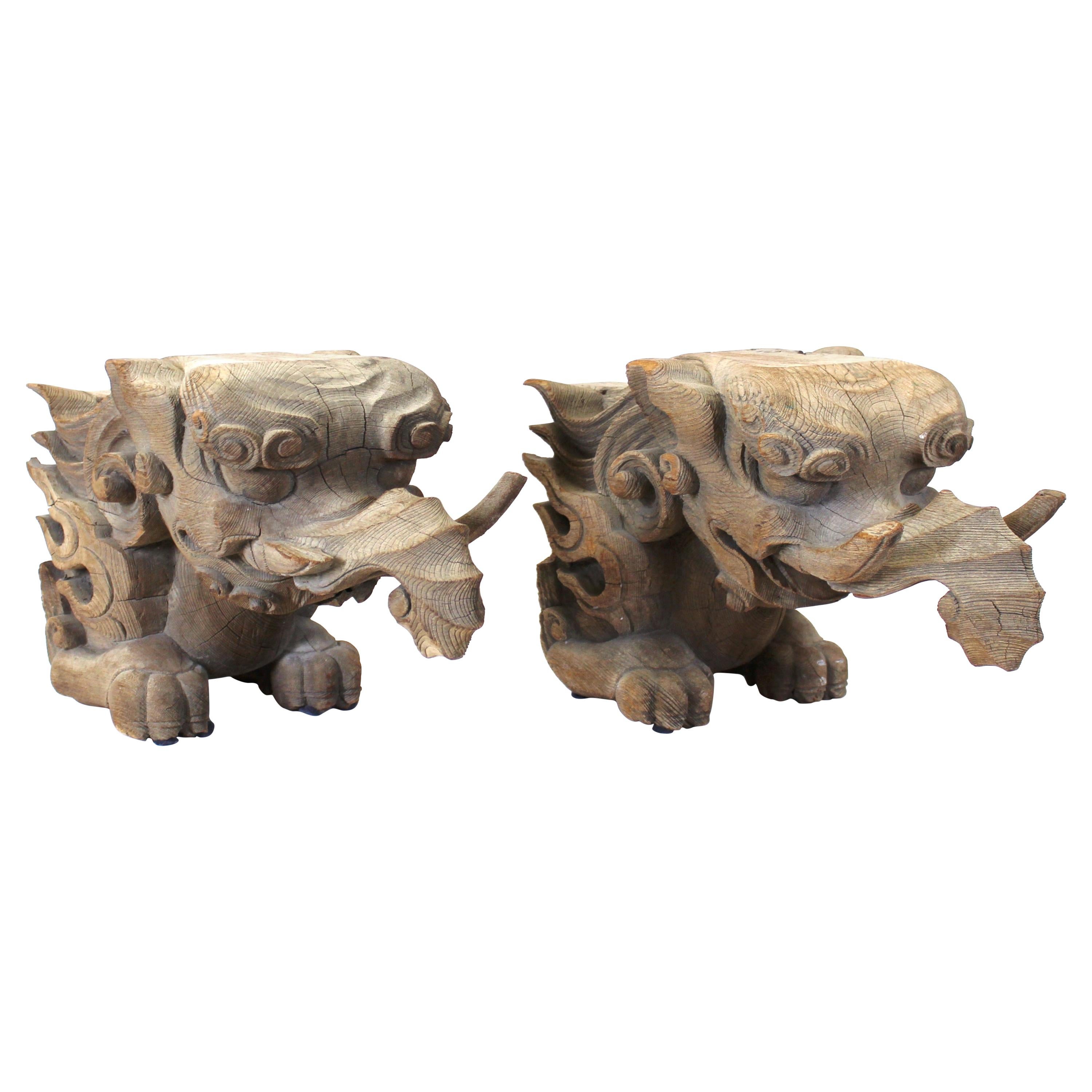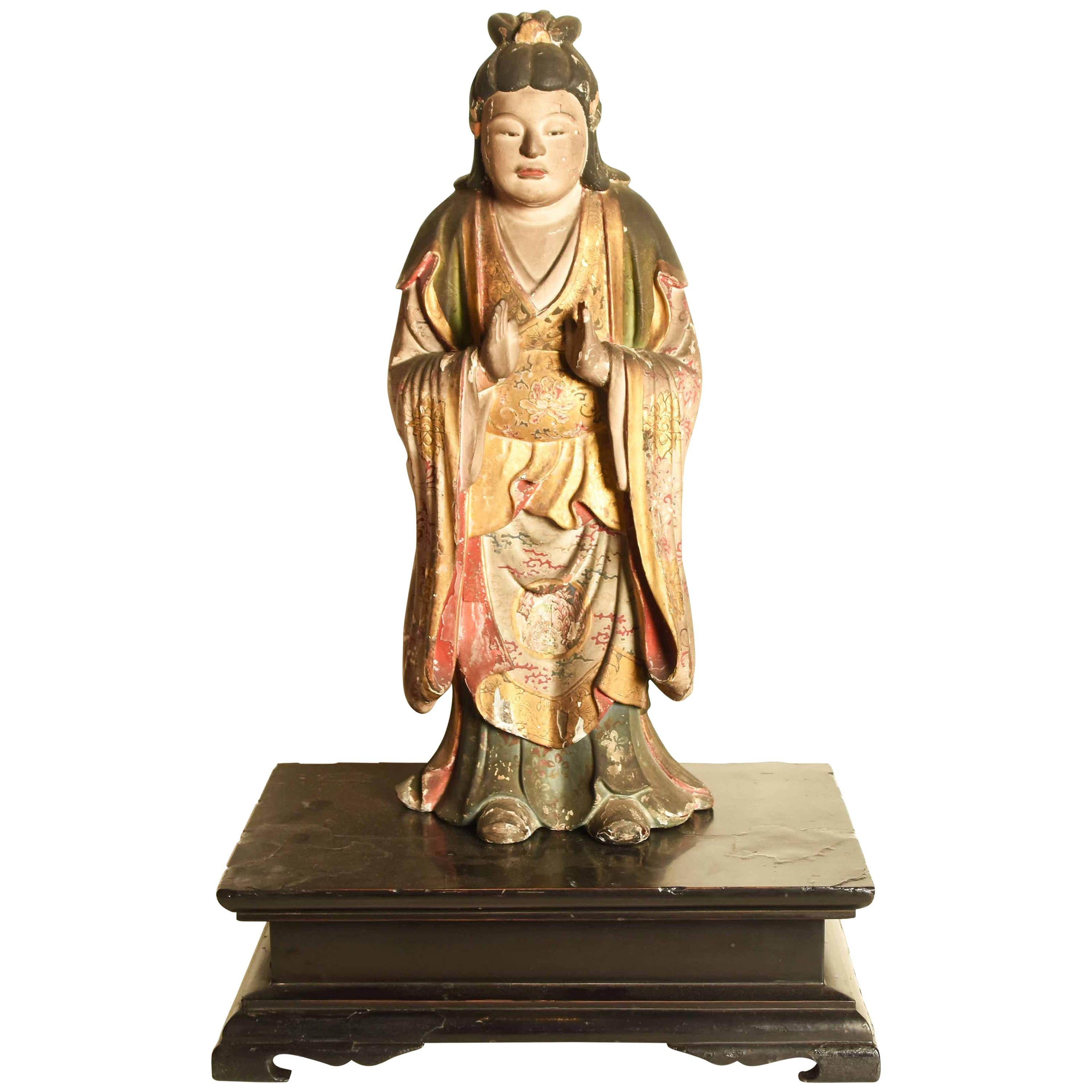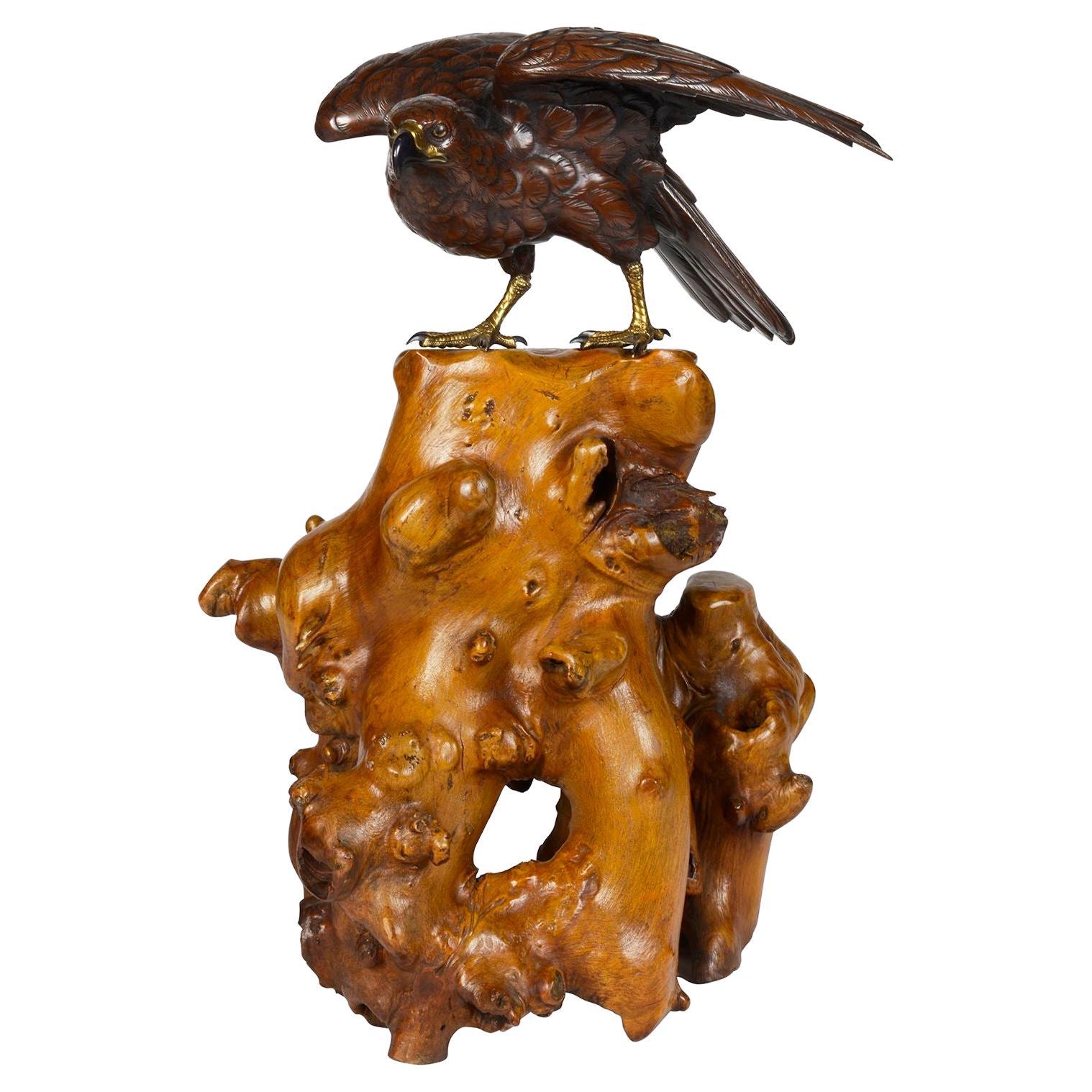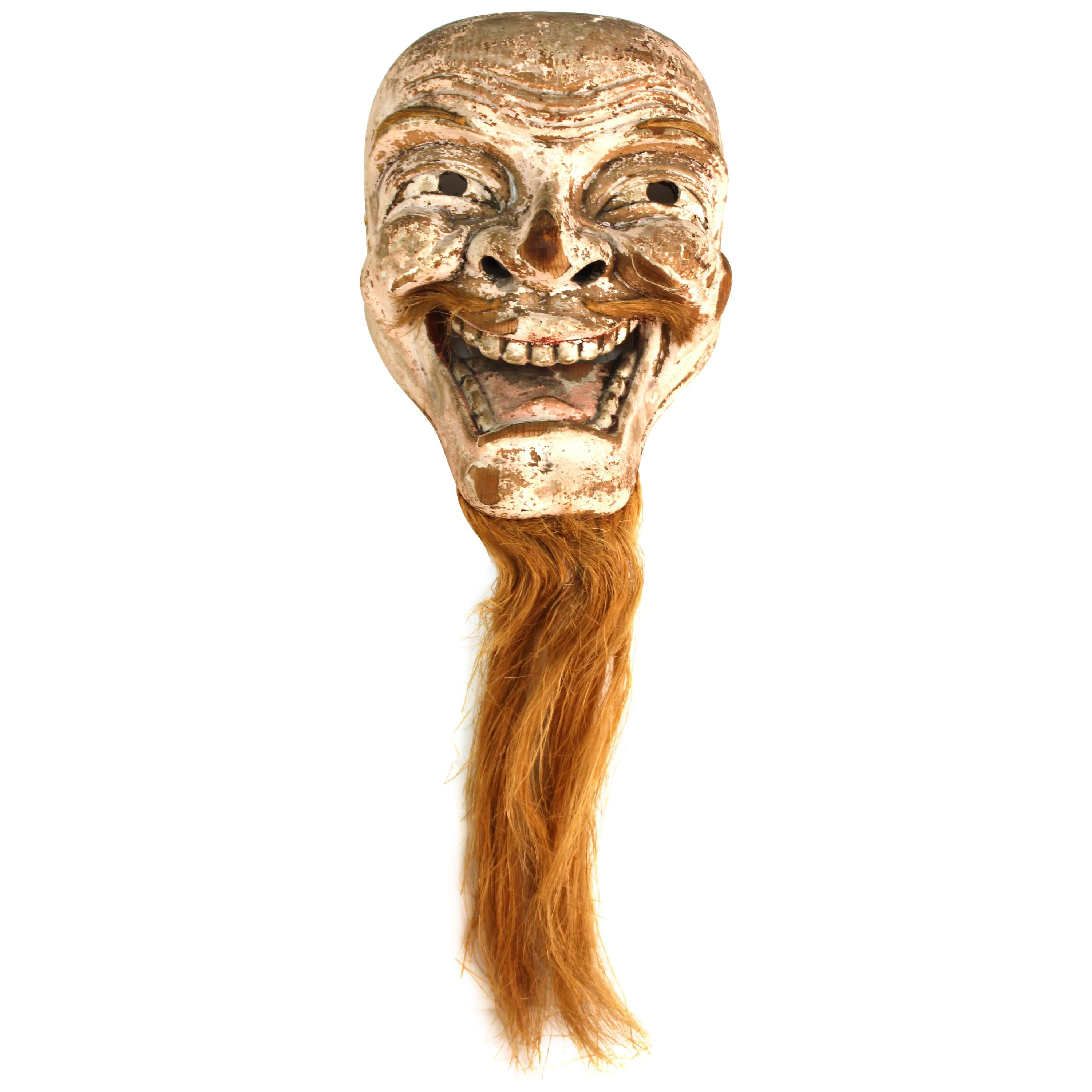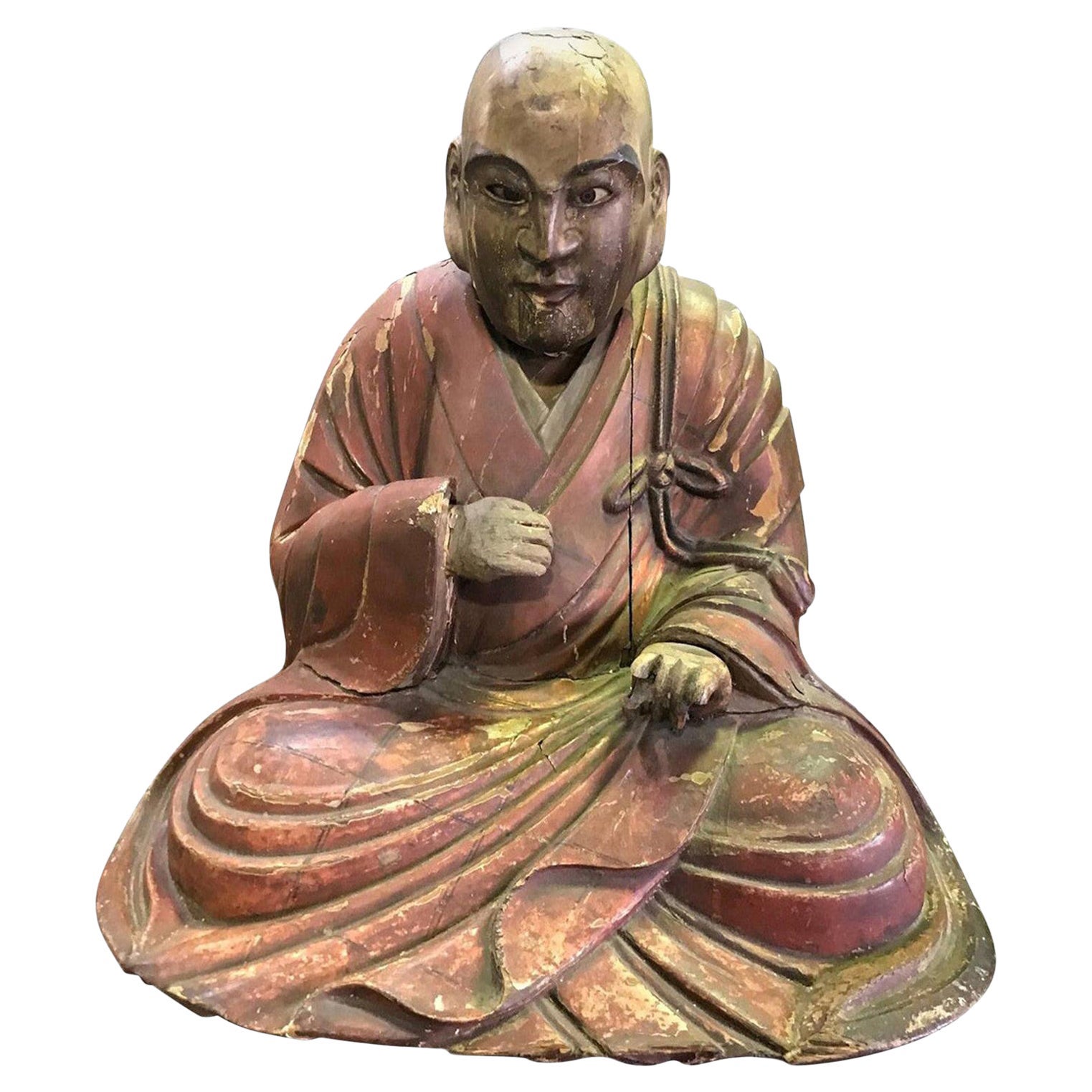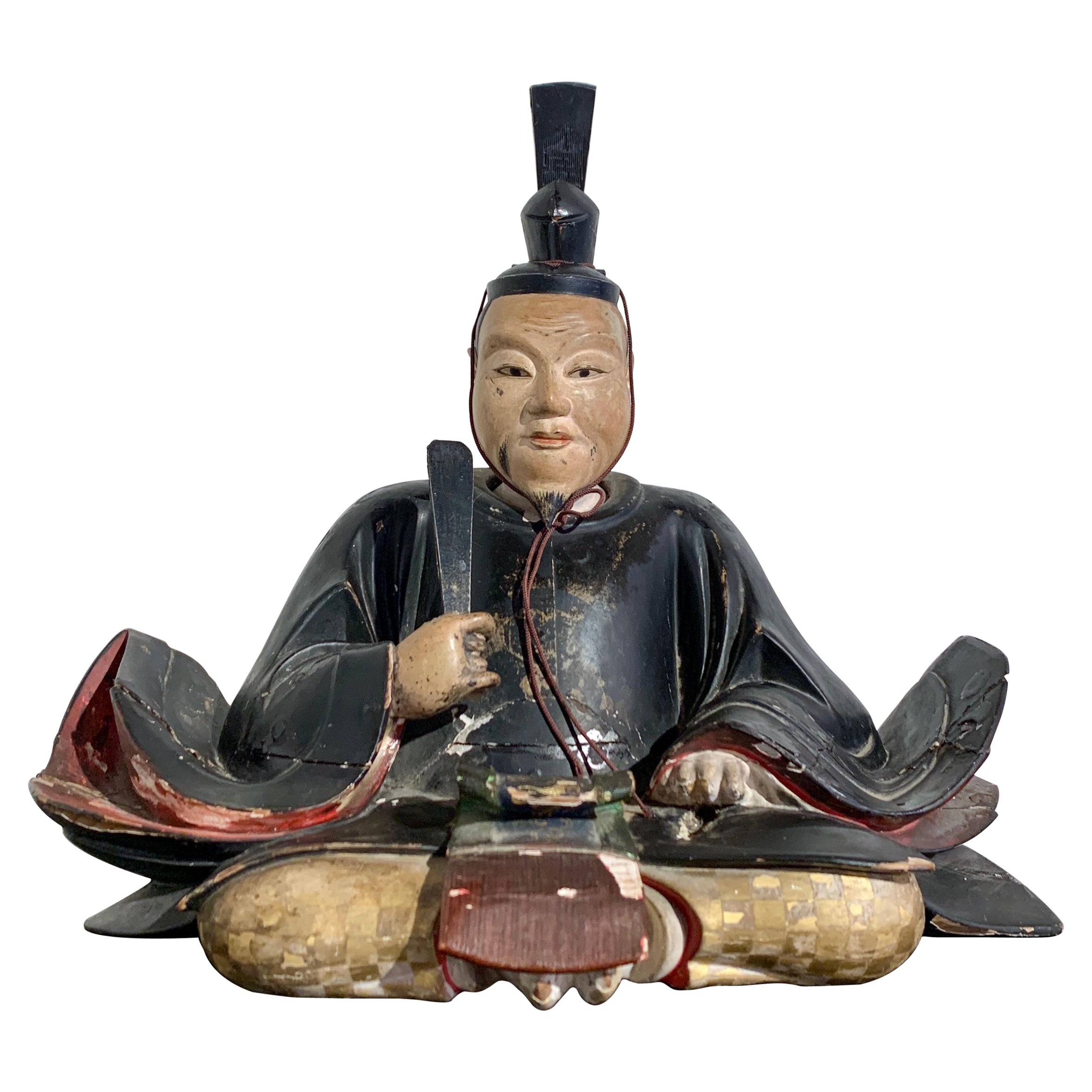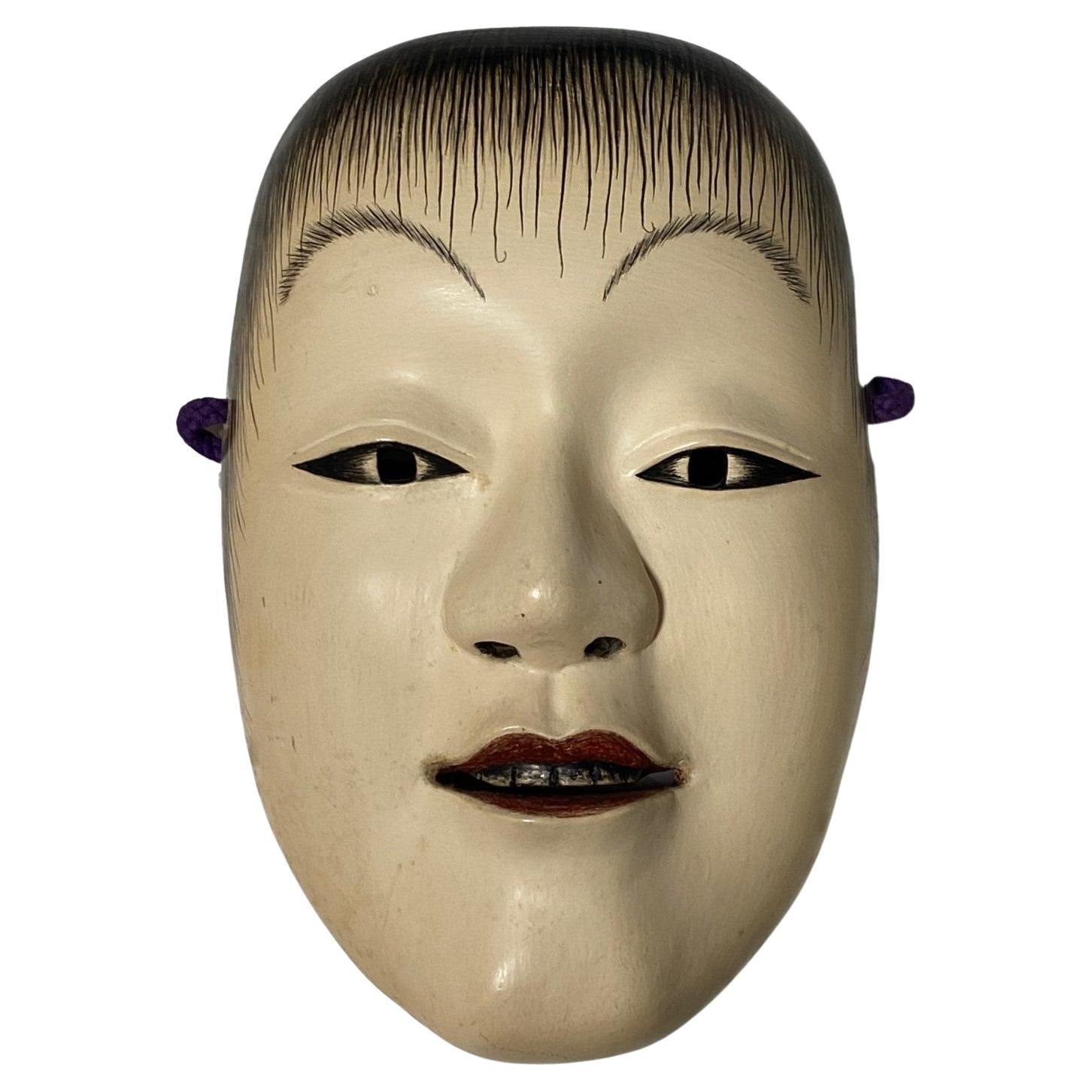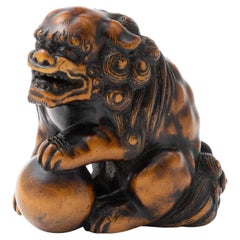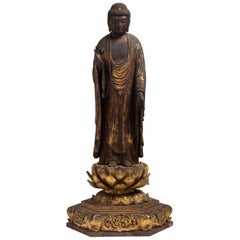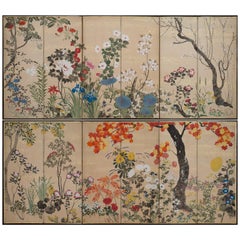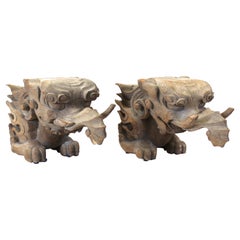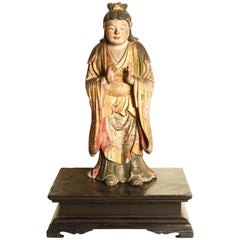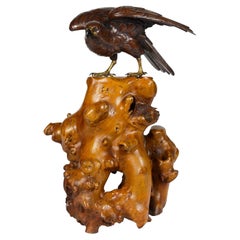
Japanese Carved-Wood Model of a Hawk, Momoyama Period
View Similar Items
Want more images or videos?
Request additional images or videos from the seller
1 of 6
Japanese Carved-Wood Model of a Hawk, Momoyama Period
About the Item
- Dimensions:Height: 16.15 in (41 cm)Width: 7.88 in (20 cm)Depth: 1.19 in (3 cm)
- Materials and Techniques:
- Place of Origin:
- Period:Early 17th Century
- Date of Manufacture:1596-1615
- Condition:Wear consistent with age and use.
- Seller Location:Milano, IT
- Reference Number:1stDibs: LU4250218827192
About the Seller
5.0
Recognized Seller
These prestigious sellers are industry leaders and represent the highest echelon for item quality and design.
Established in 2005
1stDibs seller since 2018
10 sales on 1stDibs
Typical response time: 3 hours
More From This SellerView All
- Large Wood Netsuke of a ShishiLocated in Milano, ITLarge wood netsuke of a shishi Kyoto school, 18th/19th century Height: 5.7cm The large netsuke with a very nice patina, showing the mythical creatu...Category
Antique 18th Century Japanese Sculptures and Carvings
MaterialsWood
- Japanese Wooden Buddhist Sculpture of Amida Nyorai, 16th CenturyLocated in Milano, ITThe Amitabha (Amida in Japanese) Buddha is shown standing with his hands forming the Amida raigo-in mudra. The face has a serene expression, with closed eyes under delicately arched brows and a severe face. The hair is arranged in rows of coils that also cover the "ushnisha", the protuberance on the head. The drapery is folded in elegant pleats falling from the shoulders to the feet. The antique sculpture is placed on a lotus flower which is located on a richly decorated base. Faith in Amida Buddha remained largely confined to a small segment of the Japanese population until the Kamakura Era (1185-1333) when it was popularized by new Pure Land sects committed to bringing Buddhism to the illiterate commoner. These sects expressed concern for the salvation of the ordinary person and stressed pure and simple faith over complicated rites and doctrines. Amida Nyorai...Category
Antique 16th Century Japanese Sculptures and Carvings
MaterialsWood
- Pair of Japanese Screens with Flowers of the Four Seasons, 19th CenturyLocated in Milano, ITThis pair of screens belongs to a genre of lyrical paintings of flowers, grasses, and other plants that flourished around the middle of the 17th century and became a specialty of the Sôtatsu studio. The use of a rather complex composition of clusters of flowers and the puddling of ink was initiated by Tawaraya Sôtatsu, the founder of the Rimpa School, who was active from 1600 until 1642. The screens are abstract and decorative but there is, at the same time, a keen sense of naturalism not only in the attention to accurate detail but in the profusion of vegetation. The passage of the year is symbolized by the variety of plants that bloom in different seasons. The tarashikomi - here used on leaves, petals and trunks - is a Classic Rinpa technique in which pale black ink or a color is brushed onto an area of a painting and then either darker ink, or the same or a contrasting color, is dropped into the first before it has completely dried, creating an effect of pooled colors with softly blurred edges. Its delicacy, preciousness, and effeminacy are identified with the over-refinement of its patrons, while the vigor, monochromatic discipline, sharp observation, and virile forms of the Kano school are a testament to the vitality of the rising warrior class. The plants are almost all identifiable: in the summer-spring part, you can find wheat, buttercups, irises, begonias, hydrangeas, coral bells...Category
Antique 19th Century Japanese Paintings and Screens
MaterialsPaper
- Japanese Articulated Iron Jizai Okimono of a Lobster by Myochin MuneharuLocated in Milano, ITThis articulated okimono represents a naturalistically rendered lobster, with fully articulated limbs, antennae, body, and tail and comes with an inscribed wood storage box. Signed:...Category
Antique 19th Century Japanese Metalwork
MaterialsIron
- Pair of Japanese Two-Fold Screens with Flower Arrangements and Rare BirdsLocated in Milano, ITKaramono with flower arrangements and rare birds Edo period, 18th century Pair of two-panel folding screens Ink, colors, gofun and gold leaf on paper Each 170 by 165 cm ...Category
Antique 18th Century Japanese Paintings and Screens
MaterialsPaper
- Hanging Scroll by Kamisaka Sekka, JapanLocated in Milano, ITThis painting represents a man waiting under a dark tree. The composition is extremely simple but suggestive. The artist, with few elements, can, in fact, create a vivid and dynamic scene, based on the tension between the strong ink stain that renders the tree and the elegant figure of the man, dressed in an aristocratic robe. Painter and designer, Kamisaka Sekka...Category
Early 20th Century Japanese Paintings and Screens
MaterialsPaper
You May Also Like
- Japanese Momoyama Baku Figures in Carved Keyaki WoodLocated in New York, NYJapanese Momoyama period rare early pair of Baku figures, carved in keyaki wood with an exquisite wood grain, 17th century, circa 1650. The elephant-like Baku is an imaginary and co...Category
Antique 17th Century Japanese Sculptures and Carvings
MaterialsWood
$12,500 / set - Antique Japanese Gilded Statue of a Shinto God, Momoyama PeriodLocated in Prahran, VictoriaA Japanese statue of a Shinto god from the Momoyama period. Hand carved from wood with a layer of gesso and hand painted flowing robes with delicately wroug...Category
Antique 16th Century Japanese Sculptures and Carvings
MaterialsGesso, Wood
- Japanese Meiji period bronze Hawk, circa 1890Located in Brighton, SussexA fine quality late 19th Century Meiji period Japanese patinated Bronze study of a Hawk, having gilded highlights such as the claw feet and face. Mounted on a carved hardwood root ba...Category
Antique Late 19th Century Japanese Sculptures and Carvings
MaterialsBronze
- Japanese Momoyama Carved Wooden Shinto Temple Lion Dog FiguresLocated in New York, NYJapanese Momoyama period carved wooden Shinto temple entry figures in the form of royal lion dogs seated in traditional pose. The pieces have had some co...Category
Antique 17th Century Japanese Edo Sculptures and Carvings
MaterialsWood
- Japanese Edo Period Carved and Painted Wood PlaqueLocated in New York, NYJapanese Edo period carved and hand painted wood plaque for a Buddhist temple interior, with lotus blossoms, a crane and lotus leaf shelves to disp...Category
Antique 1850s Japanese Edo Sculptures and Carvings
MaterialsWood
- Japanese Edo Period Carved Wood Mask of Man with Golden BeardLocated in New York, NYJapanese Edo period carved wood mask of a man with a golden hair beard. The piece shows a very expressive face and was likely made during the 19...Category
Antique 19th Century Japanese Edo Sculptures and Carvings
MaterialsWood
Recently Viewed
View AllMore Ways To Browse
Momoyama Period
Bird Of Prey Sculpture
Hawk Sculpture
Hand Carved Large Bird Sculpture
Samurai Warrior
Antique Official Seal
Asian Warrior Sculpture
Antique Harden Furniture
Wood Japanese Warriors Japanese Warriors
Kano School Artist
Samurai Warrior Sculpture
Temple Relief Carvings
17th Century Kano
Shogun Painting
Antique Burmese
Myanmar Antique
Burma Antique
Burmese Antique
